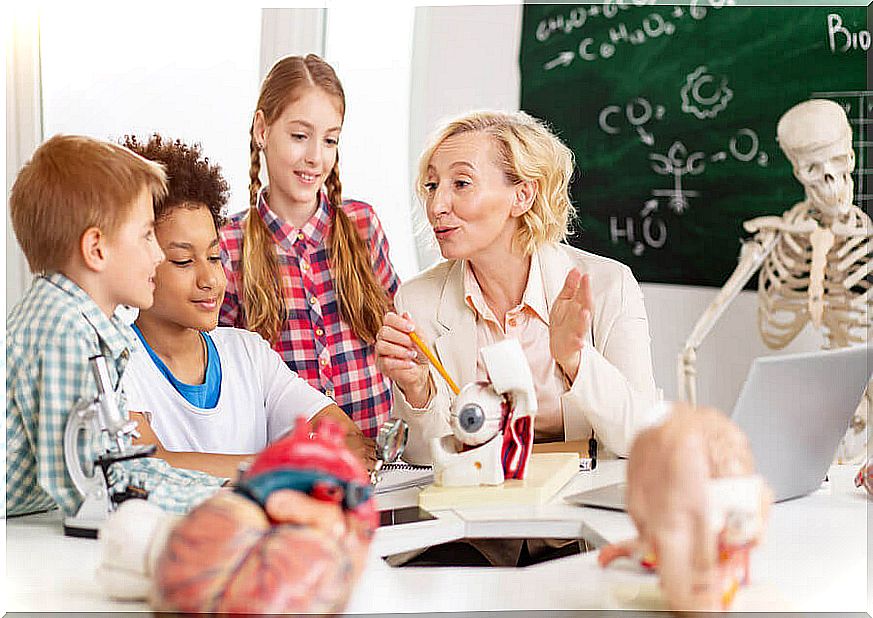Neuroeducation In The Classroom

For decades we have been maintaining the same system and the same clearly obsolete educational methods. The need for a change of approach regarding the ways of teaching and transmitting knowledge is becoming more and more evident. That is why today we are going to talk about neuroeducation in the classroom, that renewed air that can revolutionize teaching.
What is neuroeducation?
Neuroeducation is the union of neurosciences and pedagogy in order to optimize the learning experience. This discipline seeks to understand brain function (how our brain attends, encodes or remembers information) to apply it to teaching. In this way, improvements in educational methods would occur.
It is, therefore, to understand that human beings carry out an integral processing in which thought, feeling and action are an indivisible whole that gives meaning to the learning experience. And with this in mind, it is about adapting the work in the classroom.
Basic concepts of neuroeducation in the classroom
- Brain plasticity. Knowledge is not static. Our brain has a plasticity that allows us to mold and modify neural connections through continuous learning.
- Mirror neurons. This set of brain cells allows us to learn not only through our own experience, but also through the observation of others. Thanks to them we develop empathy and language acquisition.

- Interaction between genetics and experience. The reality of our abilities and capacities is determined by epigenetics. This is the conjunction of our genetics, which lays the foundations of what most attracts us or is best given to us, and the experience that is shaping and modifying these bases.
- Emotional learning. For a good internalization of the information, it is not enough to receive it at a theoretical level. Any content that evokes emotions in the person will be learned more easily and permanently.
- Meaningful learning. To really understand something we need to bring it into the “real world” and experience it in it. We must discover what we are learning really and on a practical level.
How is neuroeducation applied in the classroom?
It is of great relevance that educators know the brain function in order to optimize the academic performance of their students. The main implications of implementing neuroeducation in the classroom are the following:
How should learning be?
- Curiosity is essential to learning. Students’ innate enthusiasm and desire to learn must be encouraged, proposing challenges and adventures in teaching content.
- Learning must be active. It is not enough for students to receive information passively, but they must manipulate it and actively participate in its preparation.
- It is very important that meaningful and emotional learning takes place .
- It is especially relevant to carry out teaching through different channels, so that both novelty (in the communication channels) and repetition of the contents are produced. This will greatly facilitate the student to integrate the knowledge.
How should the environment be?
- The physical environment of the classroom must be adequate. It must be beautiful, orderly and varied, because in this way we better attend to changing stimuli.
- It must also have a decoration integrated with the teaching unit of the moment, as well as lighting that is as natural as possible.
- Soft music in the background is also suitable.

How are educators to act?
- Teachers should strive to foster a positive classroom climate and should be approachable and empathetic.
- It is very important to help students identify their emotions and manage them. That is, to be able not to react impulsively, but to respond in a thoughtful and appropriate way.
- Helpful and uplifting feedback should be provided to students. This means that it is not enough to give a numerical value to the child’s work, but it is necessary to give specific guidelines to improve mistakes and, above all, maintain motivation by highlighting those things that have been done correctly.
- Help students to build healthy self-esteem, to feel capable and valid. For this, comparisons with other students should be avoided at all costs.










